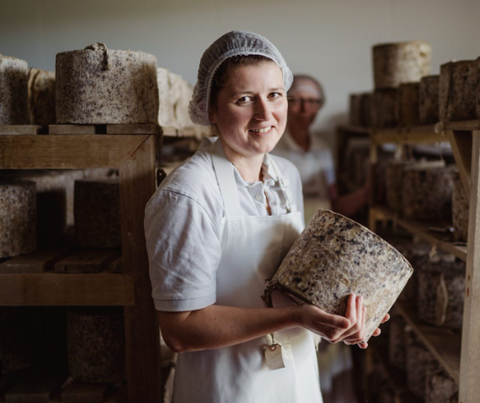A Preference of Authenticity: Floridia Cheese Melbourne and Its Workmanship
Wiki Article
Unlocking the Tricks of Artisanal Cheese Making: A Detailed DIY Guide
In the realm of culinary craftsmanship, artisanal cheese making stands as a testament to the fragile equilibrium between custom and development. As we begin on this journey to demystify the art of producing charming cheeses, we are faced with a tapestry of skills and secrets waiting to be unwinded.Selecting the Right Milk
When getting started on the trip of artisanal cheese production, the selection of milk plays a vital role in establishing the high quality and qualities of the final product. The sort of milk chosen impacts the flavor, texture, and overall account of the cheese. Raw milk, right from the pet, is liked by many artisanal cheesemakers due to its unique mix of enzymes, bacteria, and taste compounds. Making use of raw milk comes with guidelines and dangers, making pasteurized milk a safer choice for novices.When picking milk for cheese production, it is very important to think about the fat content. Higher fat material in milk can lead to a creamier and richer cheese, while lower fat web content might bring about a drier and firmer appearance. Furthermore, the source of the milk, whether from cows, goats, sheep, or buffalo, adds distinct tastes and features to the cheese (Floridia Cheese Thomastown). Each kind of milk brings its very own nuances, permitting a large range of cheese varieties to be crafted based upon the chosen milk. Eventually, the choice of milk is a basic decision that establishes the foundation for an effective artisanal cheese-making undertaking.
Culturing and Coagulating
To initiate the cheese-making procedure, the critical steps of culturing and coagulating need to be meticulously executed to change milk right into curds and whey. The type of culture used can significantly influence the flavor, appearance, and ripening of the final cheese item.

The timing and temperature level control throughout culturing and coagulation are vital aspects that affect the final outcome of celebrity. Correct execution of these steps is important to guarantee the desired structure, flavor, and uniformity of the artisanal cheese being produced.
Draining Pipes and Pushing Curds
After the milk healthy proteins have coagulated and the curds have actually been cut to launch whey, the following essential action in artisanal cheese making includes draining and pressing the curds to attain the wanted structure and uniformity of the last cheese item. Draining is the procedure of separating the curds from the whey. This can be done by moving the curds into a cheesecloth-lined bowl-shaped sieve or mold and enabling the whey to drain off normally. The time for draining pipes can vary relying on the sort of cheese being made and the desired moisture material.Pushing aids eliminate any type of staying whey and compacts the curds to form a strong cheese wheel. Proper pushing and draining are vital steps that substantially affect the quality and features of the artisanal cheese being produced.
Aging and Flavoring Strategies
Carrying out meticulous aging and flavoring strategies is critical in boosting the depth and intricacy of artisanal cheeses, elevating their taste accounts to charming levels of improvement and elegance. Aging plays a crucial duty in developing the one-of-a-kind flavors and appearances that identify artisanal cheeses. Throughout the aging procedure, cheeses are stored in meticulously controlled settings where variables such as temperature, humidity, and airflow are adjusted to encourage the growth of helpful molds and germs. This controlled environment enables celebrity to develop slowly, establishing abundant tastes and complicated aromas.Flavoring methods likewise add considerably to the final taste of artisanal cheeses. Cheesemakers may select to present additional tastes by including ingredients such as herbs, seasonings, or even fruits into the cheese during the production process. Furthermore, some cheeses are cleaned or scrubed with various liquids, such as salt water or alcohol, to boost their structures and tastes.
Covering and Keeping Cheeses

Conclusion
In verdict, understanding the art of artisanal cheese making involves carefully choosing the right milk, adhering to accurate culturing and coagulating procedures, draining pipes and pressing curds successfully, and making use of different aging and flavoring methods. Bear in mind to wrap and save your cheeses properly to make certain optimum taste and texture development.Each kind of milk brings its very own nuances, allowing for a large range of cheese varieties to be crafted based on the selected milk.After the milk proteins have coagulated and the curds have been cut to release whey, the following crucial action in artisanal cheese making involves draining and pushing the curds to achieve the wanted structure and consistency of the last cheese item. A lot of cheeses need to be wrapped in wax paper or cheese paper to permit them to breathe while protecting them from drying out. For cheeses that need to proceed aging, such as bloomy skins or washed peels, ensure they are kept in an awesome setting like a cheese cave or a refrigerator set to the suitable temperature. By paying interest to check that the covering and storage of artisanal cheeses, cheese makers and fanatics can protect the integrity of these delicacies try here and completely enjoy their complicated flavors.
Report this wiki page